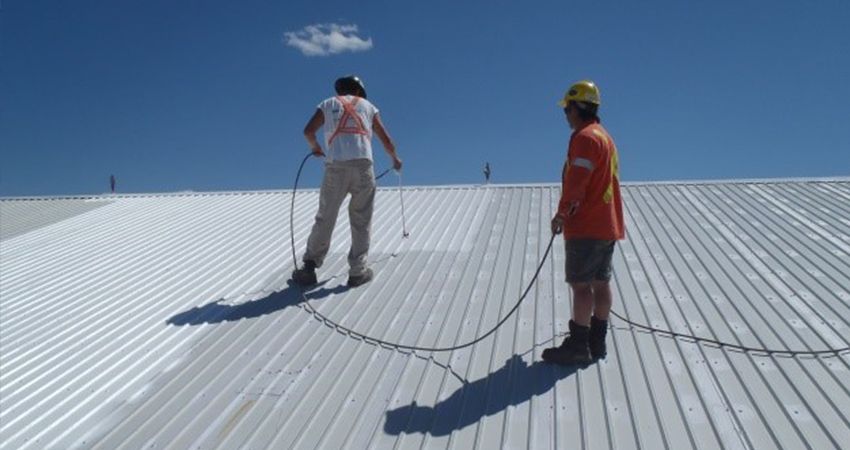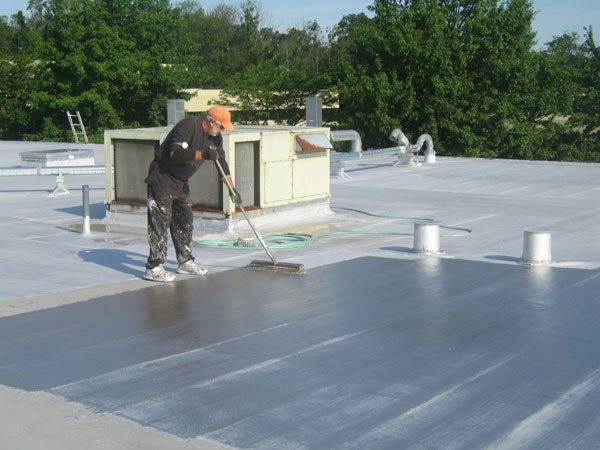
Do you want to ensure the safety of your home in every way possible? Why not begin by applying a roof coating immediately to the top? Roofs are a crucial component of every building. Every part of it has to be carefully coated and maintained.
Roof coatings serve as a barrier between your roof and the weather. They are useful because they deflect sunlight, stop water pooling, and moderate temperature swings on a roof.
They are an additional layer of protection that sticks to the roof membrane and may expand and contract without tearing. In this article, we’ll discuss the benefits and drawbacks of different roof coatings so you can make an informed decision.
Acrylic Roof Coatings
Coating roofs with acrylic is a tried-and-true technique that has been around for a while and works well. These paints are effective despite being water-based. Since they are water-based, acrylic paints are resistant to the elements and may be used in various harsh environments.
The temperatures in your home may drastically affect the quality of these paints. Generally speaking, temperatures of fifty degrees or more are ideal for applying an acrylic coating. Over time, the color should be well maintained.
● Pros:
UV damage is significantly reduced when acrylic roof coatings are used. Most roofers say that sloped roofs are ideal for this kind of coating. Acrylic roof coatings have excellent weather resistance, which is why they are often recommended.
Because they are immune to climate change, they may be used in various settings. These coatings shield the roof from the damaging effects of the sun’s rays, the corrosive effects of rain, and the eroding effects of wind and hail.
These coatings are suggested in all four seasons because of their adaptability. Due to their high reflectivity, these coatings deflect the sun’s heat and protect the roof from damaging UV rays, making it more comfortable during the warmer months.
● Cons:
These coatings degrade over time and need periodic reapplication, which may be expensive. Unfortunately, the issue of water pounding cannot be overcome with acrylic coatings. Water ponding signifies that your roof coating isn’t doing its job, so look into other options.
Polyurethane Roof Coatings
Polyurethane coatings are the most impact-resistant and traffic-tolerant options. Polyurethane roof coatings may either be aromatic or aliphatic. Aromatic coatings are often utilized as a base coating because of their low cost and lack of UV stability.
However, aliphatic coatings are more costly but resistant to ultraviolet light, color retention, and cleanliness.
● Pros:
When compared to an acrylic coating, the benefits of a polyurethane roof coating system consisting of an aromatic base coat and an aliphatic top coat are clear: greater durability, cleanliness, and resistance to ponding water.
Additionally, they are effective as cool roofs due to their ability to remain white and maintain cleanliness.
● Cons:
They may have a more strong odor than other coatings. The cost of an acrylic or silicone coating is far lower than that of an aliphatic or aromatic coating.
Silicone Roof Coatings
Silicone coatings have been used for many years and have a proven track record of providing excellent performance at a low cost. Silicone roof coatings may benefit from increased cure time if humidity levels are kept relatively high. Additionally, many silicone roof coatings may be applied without first applying a priming layer.

● Pros:
Roof coatings made of silicone will not harden or become brittle over time. It also holds up well against erosion and water ponding. Since silicone requires moisture to cure, rainy conditions speed up the process.
● Cons:
While silicone attracts and stores dirt, the cleansing properties of rain make up for this disadvantage. But this also means that the material will lose its reflective properties over time.
In addition, silicone is a poor adhesive, so if the roof ever has to be replaced, you’ll need to either remove the silicone or find a new material that works with it.
Conclusion
An investment in roof coating will pay off in the long run. Coating your roof with low-quality paint may result in damage within a short time. For a return on your investment, you should aim for a lifespan of at least ten years for your roof coating.
There are various roof coatings on the market, and not all of them will serve your needs. Always use a coating that meets the specifications of the roof you’re working on. If you hire specialists to apply high-quality paints to your roof, you won’t have to worry about keeping it in good condition.
